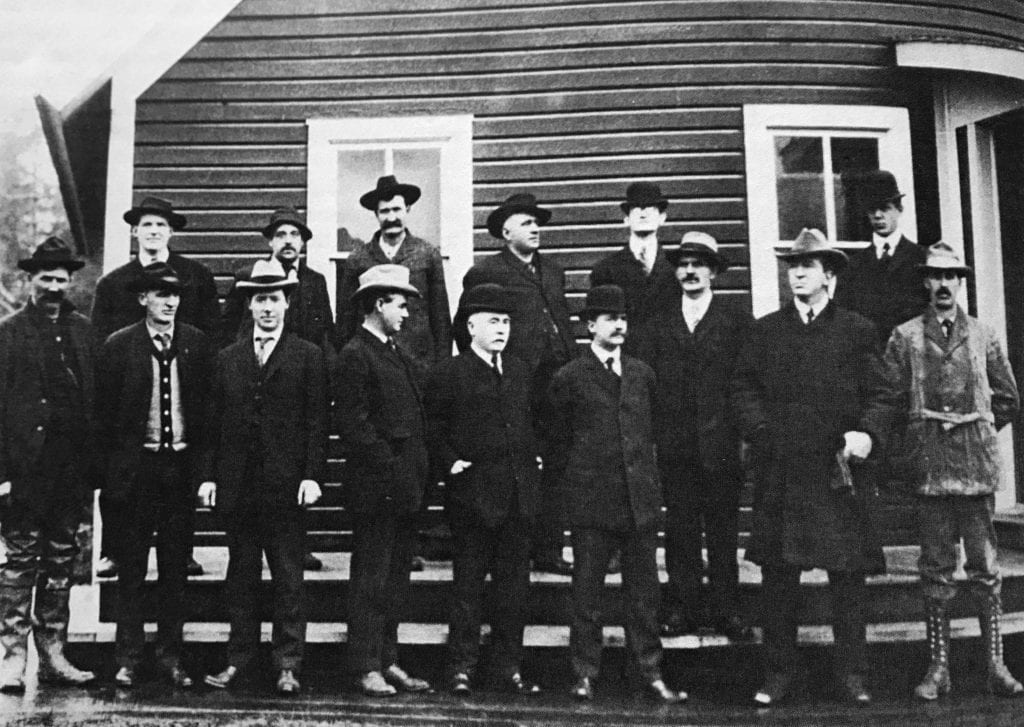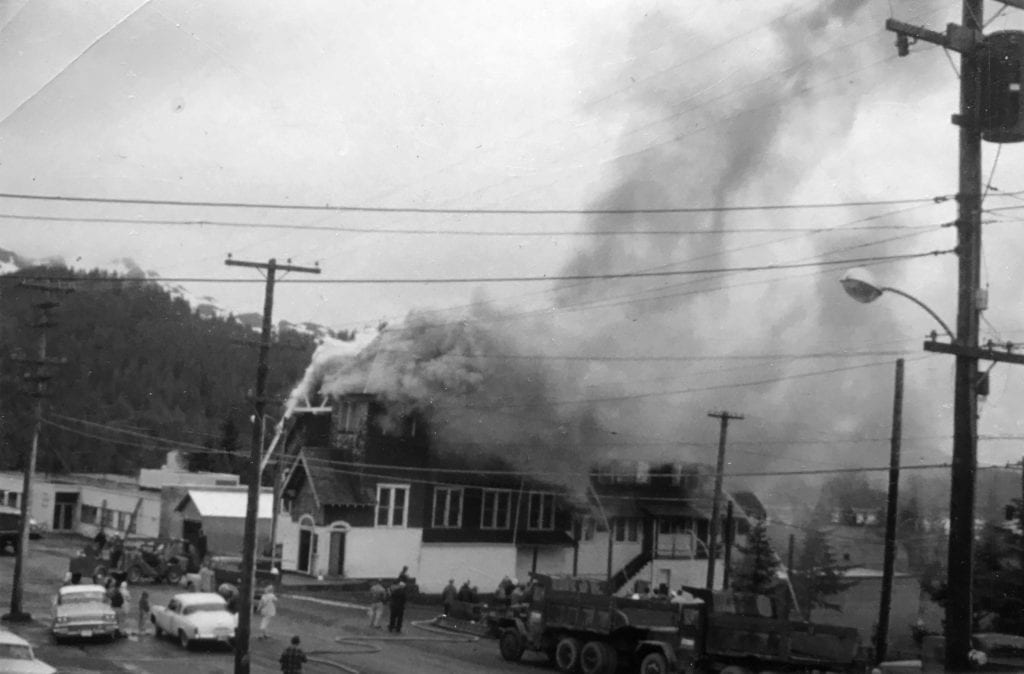
History is where you find it — which is often right under your very nose.
In this case, it was in my wife’s craft room, where she has been laboring away documenting the history of the Cordova Baptist Church.
As is often the case, tidbits about local figures, places and events are intertwined in its story.
It began in 1908 as a Presbyterian Church, which held services in various locations until February 1910, when a church was built above the original school building, which now sits abandoned near Dr. Urata’s office.
Following the completion of the Copper River Railway and the exodus of construction workers, its membership dropped, but by 1919 the church grew enough to move to a more accessible part of town, namely on the corner of Adams Avenue and Second Street, where it resides to this day.
At first, only a church auditorium was built, but as funds permitted, Sunday school rooms, a gymnasium and apartments were added.
Interesting enough, a sizable $20,000 donation from Doctor W.W. Council spearheaded construction of the gymnasium, with the understanding that it would be used as a community center for all, where, under terms of the agreement, there would be no fee for its use by children, there would always be an instructor on hand, every child would have a fair chance at games, and learn the “daily dozen” as well as other fitness exercises.
The facility was completed by 1923, and continued operating by the Presbyterians until 1950, when denominational sponsorship switched to the Baptist Church, with the Hospital Association of Cordova voting at that time to accept the offer of the American Baptist Missionary Society to take over the hospital.
I fondly recall the old basketball court in the basement, accessed by a steep narrow stairway. The wood floor had warped in places, but not only did we play little league basketball in the gym, Cub and Boy Scout meetings were held there, and were highlighted by Council’s exercises, as well as black and white WWII movies of the air war over Europe.
On July 4, 1960, a fire that apparently started around a faulty oil burner in the basement destroyed the entire facility, which included the Community Christian Center that served all of Cordova.

Undaunted, the Baptist congregation met in The Cordova Times Building until 1962, when the Baptist Church that stands today was completed.
In fact, on Aug. 16, 1962 The Cordova Times ran a front-page story with photos showing members and friends of the Community Baptist Church, in procession, marching from their temporary quarters in the Times Building down Second Street past the old Windsor Hotel to “their fine new edifice”. The Oct. 4, 1962 edition front-paged a photo of 120 persons enjoying a dedication dinner at the Community Baptist Church in what is now called The Homeport.
Equally intriguing was a photo on the front page of that same paper of Dr. Will H. Chase, under the headlines “Chamber Declares ‘Dr. Will Chase Day’.”
A famous doctor, outdoorsman, and community member, Chase came to Cordova in 1908 and served 24 terms as mayor.
Dr. Council arrived at about the same time and is shown in a memorable photo in the Anchorage museum of the entire CR&NW Railroad staff that included M.J. Heney, who masterminded the railway’s creation.
Hence it should come as no surprise that two of Cordova’s main avenues bear the names of prominent local physicians, Chase and Council, while the biggest nearby mountain is named after the indomitable Heney.
Incidentally, a note regarding Dr. Council’s reference to the “Daily Dozen.” This was a set of 12 calisthenic exercises designed by Walter Camp, a former college athlete, and prolific writer of books and articles on sports and the outdoors, that were to be performed in an attempt to stay healthy and fit.
They included moves Camp labeled “hands, hips, head, grind, grate, grasp, crawl, curl, crouch, wave, weave and wing”.
Clearly, Camp was a fan of alliteration, as well as exercise. Many of his Daily Dozen are still incorporated in Army training routines.
And Dr. Council would likely smile to see that several of them are still used in exercise routines in the Bidarki Center which overlooks the avenue named in his honor.





